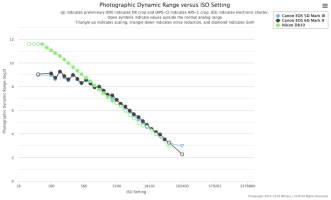For me the most exciting thing is the new mount type. Whatever kind of camera body Canon will launch, they will replace it within three or four years. The new mount however, will last 30 to 40 years.
I am eager to get answers to two question.
What about the EOS M camera bodies? There is only a limited set of M-mount lenses available. Where could get a high-end M-mount camera (EOS 7D/Nikon D500 class) the necessary tele and macro lenses from?
I am eager to get answers to two question.
- will the EF-mount lenses fit onto the new camera body without adapter?
- what about the compatibility to the M-mount? So far, all crop camera bodies can use full frame lenses from the same vendor without adapter. Canon EF-S to EF, Nikon DX to FX, Sony E-mount crop to E-mount full frame.
What about the EOS M camera bodies? There is only a limited set of M-mount lenses available. Where could get a high-end M-mount camera (EOS 7D/Nikon D500 class) the necessary tele and macro lenses from?
Upvote
0


